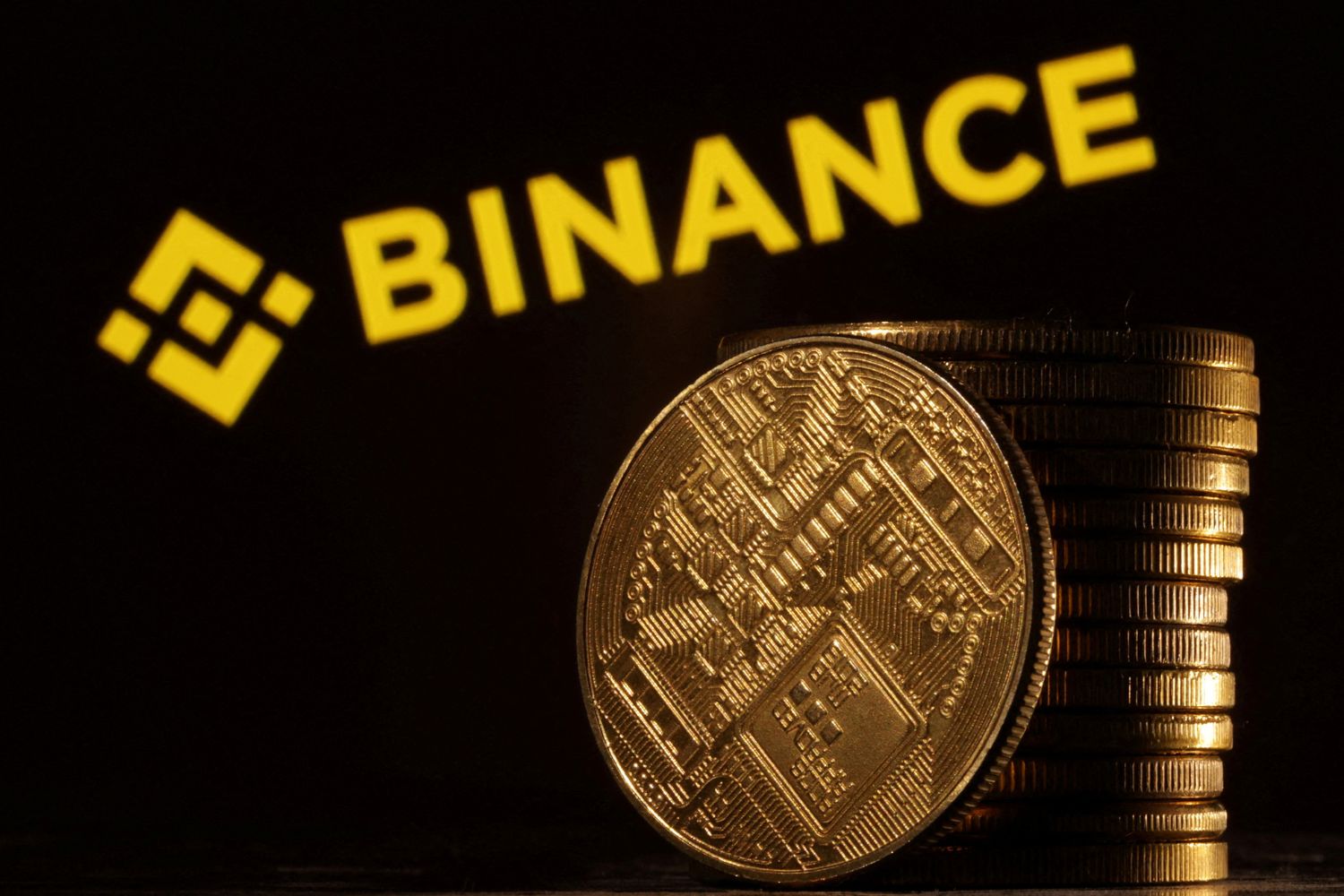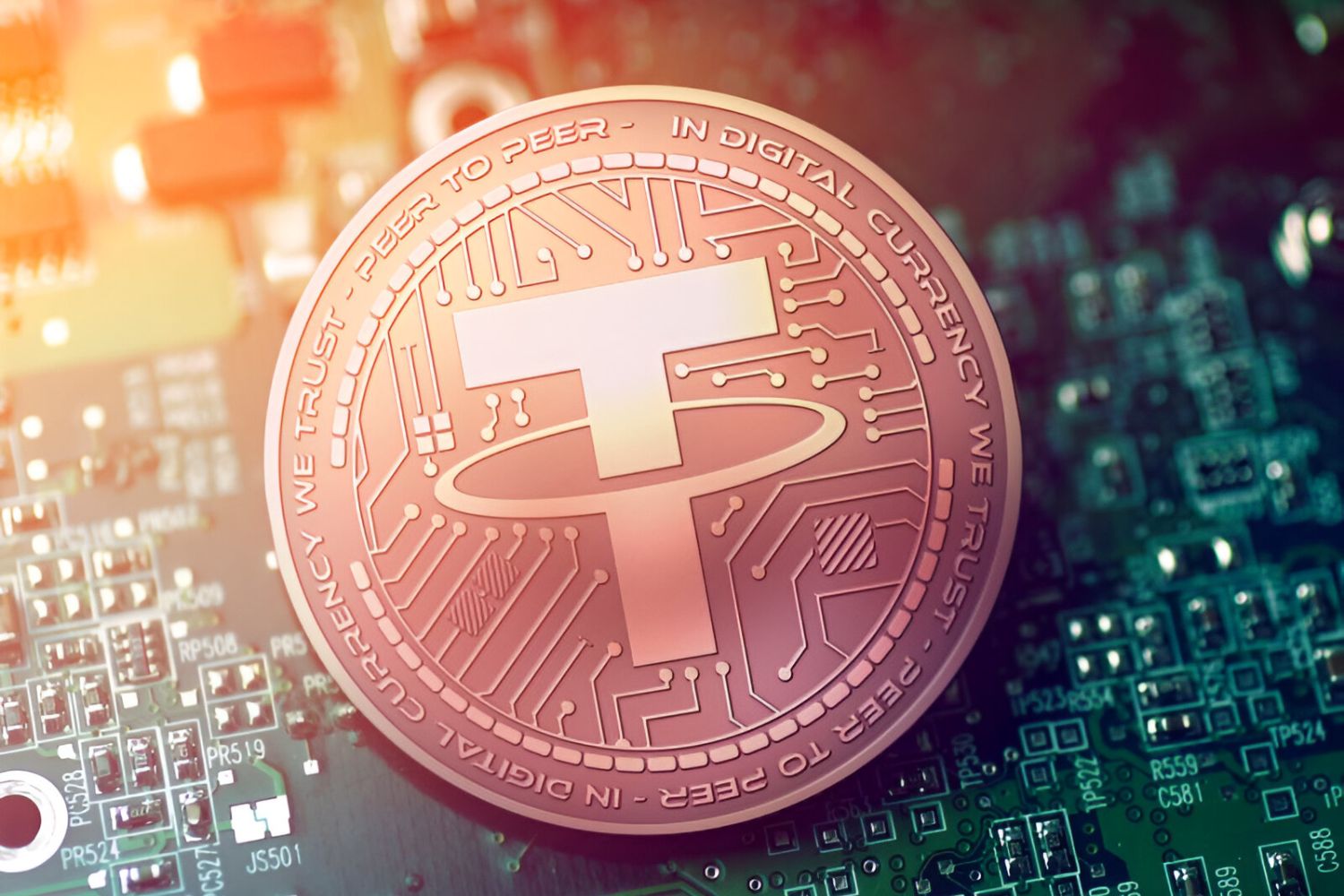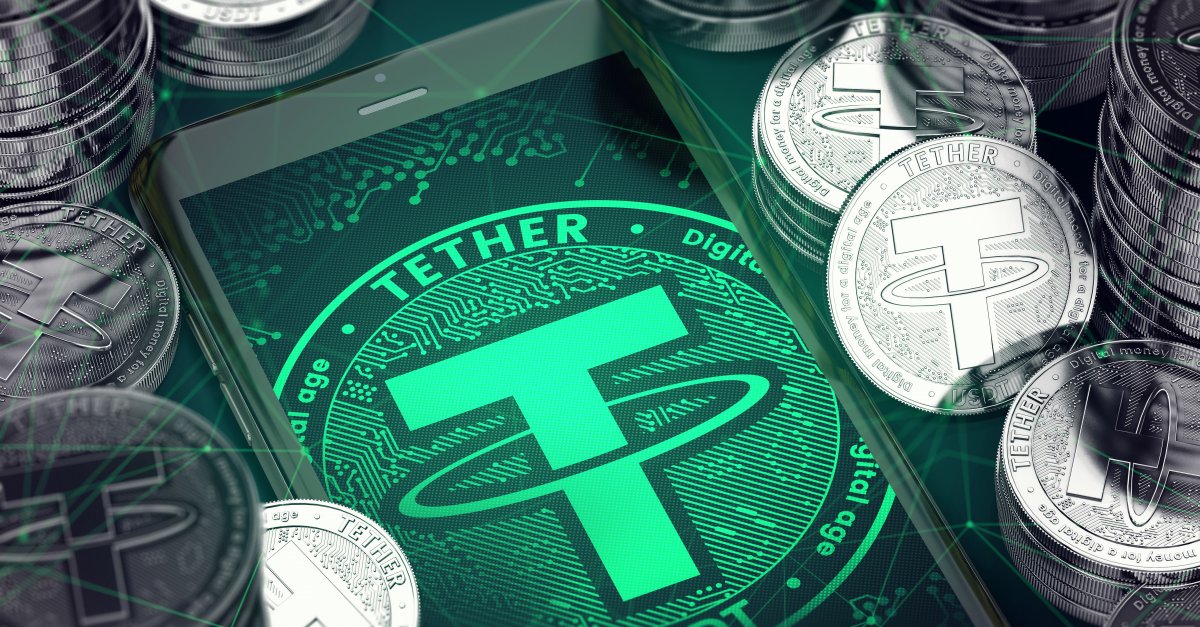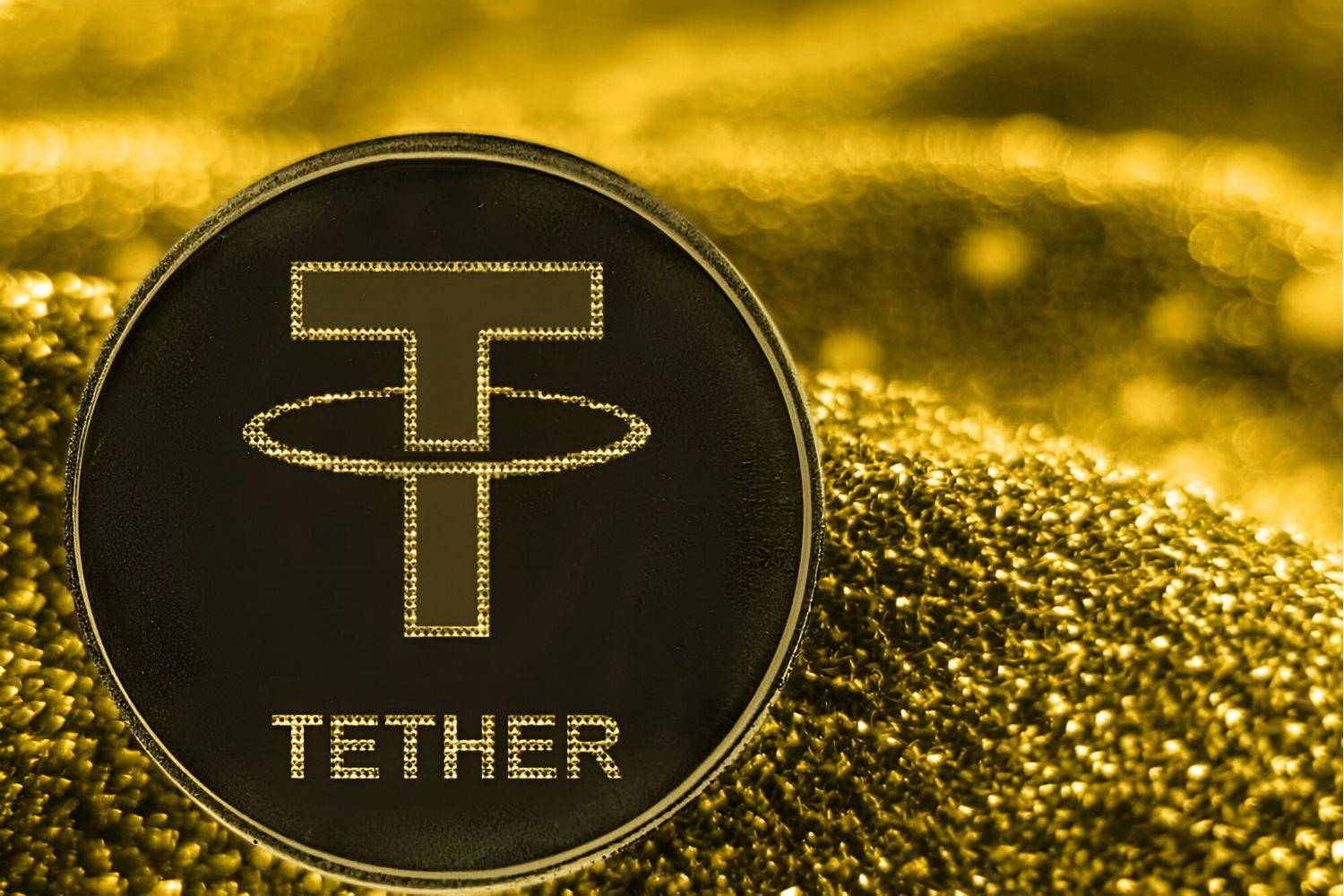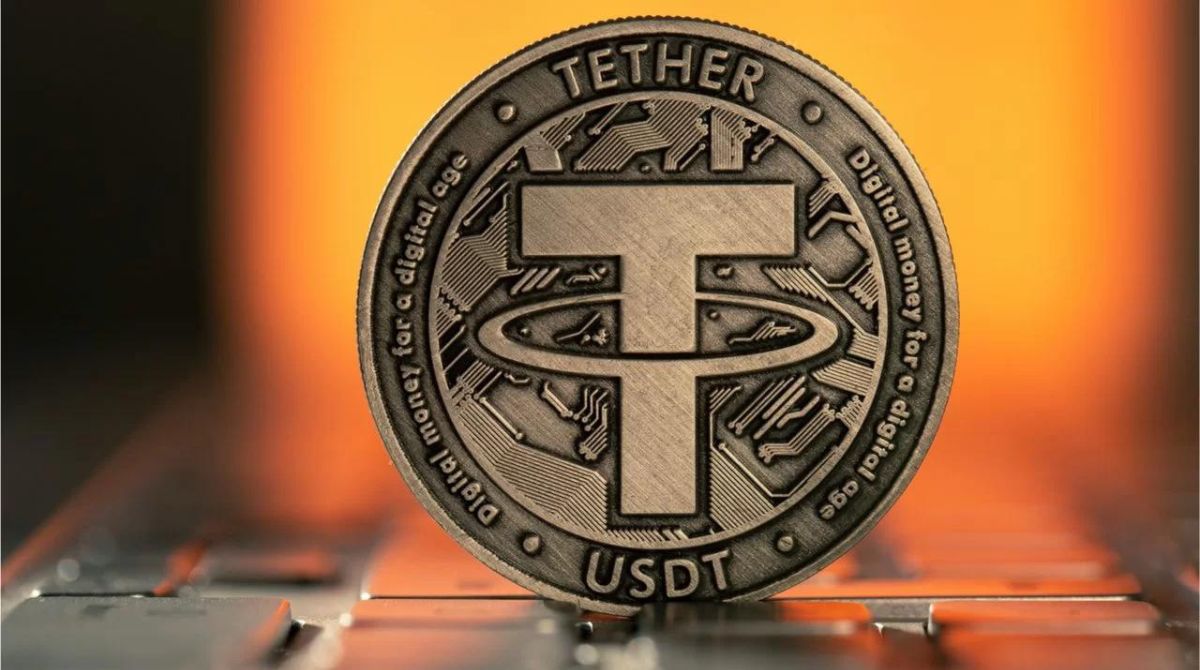The Origins of Tether
Tether, originally known as Realcoin, was created as a cryptocurrency with the aim of introducing stability and liquidity to the volatile world of digital currencies. Founded in 2014 by Brock Pierce, Reeve Collins, and Craig Sellars, Tether sought to bridge the gap between traditional fiat currencies and cryptocurrencies.
The concept behind Tether was to create a digital asset that was backed by real-world assets, specifically the US dollar. This would allow individuals and businesses to easily convert their cryptocurrency holdings into a stable value equivalent to the US dollar.
The motivation for creating Tether stemmed from the inherent volatility of cryptocurrencies like Bitcoin and Ethereum. The value of these cryptocurrencies often experienced extreme price fluctuations, a characteristic that made them unsuitable for everyday transactions. Tether aimed to address this issue by providing users with a stable and reliable alternative.
The team behind Tether understood the importance of transparency and trust in the cryptocurrency market. To build confidence among users, they ensured that each Tether coin was fully backed by reserves of US dollars held in designated bank accounts. This meant that for every Tether in circulation, there was an equivalent amount of US dollars held in reserve.
Tether started gaining traction in the cryptocurrency community, and its popularity grew rapidly due to its potential to provide stability and liquidity to the market. As a result, Tether became one of the leading stablecoins in the industry, with a significant market capitalization and widespread adoption.
In summary, Tether was created in 2014 as a solution to the volatility of cryptocurrencies, with the goal of providing stability and liquidity. By backing each Tether coin with an equivalent amount of US dollars, Tether aimed to create a digital asset that could be easily converted and used for everyday transactions.
Understanding Tether’s Purpose
Tether was designed with a clear purpose in mind – to serve as a stable digital currency that maintains a one-to-one ratio with the US dollar. The primary goal of Tether is to provide stability and security to cryptocurrency users, allowing them to easily transact and store value without being subject to the volatility associated with other cryptocurrencies.
One of the key purposes of Tether is to act as a bridge between the digital and traditional financial worlds. By representing the value of a fiat currency, Tether enables individuals and businesses to transact in a digital asset without having to rely on traditional banking systems. This aspect of Tether makes it particularly appealing to individuals in countries with restrictive financial regulations or limited access to banking services.
Tether also serves as a convenient means of facilitating transactions between different cryptocurrency exchanges. By using Tether as a medium of exchange, traders can quickly and efficiently move funds between platforms without the need for complicated conversion processes.
Another important purpose of Tether is to provide a store of value and a hedge against market volatility. Unlike cryptocurrencies that experience significant price fluctuations, Tether’s value is anchored to the US dollar, making it a reliable asset for those seeking stability in their investments. Moreover, Tether offers greater liquidity compared to traditional fiat currencies, ensuring that users can easily convert their Tether holdings into other digital assets or fiat currencies.
Furthermore, Tether also serves as a tool for arbitrage opportunities within the cryptocurrency market. Traders can take advantage of price differentials across various exchanges by using Tether as an intermediary currency, facilitating quick and efficient trades.
In summary, Tether’s purpose is twofold: to provide stability and security in the volatile cryptocurrency market, and to act as a bridge between the digital and traditional financial systems. Tether enables users to transact and store value in a reliable digital asset, while also facilitating efficient trading and arbitrage opportunities within the cryptocurrency ecosystem.
The Link Between Tether and the US Dollar
One of the key aspects that sets Tether apart from other cryptocurrencies is its connection to the US dollar. Each Tether coin is tethered, or pegged, to the value of one US dollar. This means that for every Tether in circulation, there is an equivalent amount of US dollars held in reserve by Tether Limited, the company behind Tether.
The link between Tether and the US dollar is maintained through a mechanism known as “backing.” Tether Limited ensures that it holds sufficient reserves of US dollars in designated bank accounts to fully back the amount of Tether coins in circulation. This backing serves as a guarantee that each Tether coin can be redeemed for its equivalent value in US dollars.
By pegging Tether to the US dollar, Tether Limited aims to provide stability and confidence to users. This link to a stable fiat currency offers reassurance that the value of Tether will not experience the extreme price fluctuations characteristic of other cryptocurrencies.
Furthermore, the connection between Tether and the US dollar also allows for greater liquidity and ease of use. Because Tether maintains a one-to-one ratio with the US dollar, it can be seamlessly converted into traditional fiat currencies, facilitating transactions and enabling users to access funds in a familiar and widely accepted form.
It is important to note that despite the link to the US dollar, Tether is not considered legal tender. Instead, it operates as a digital asset or cryptocurrency that represents a claim on the underlying US dollar reserves.
Overall, the link between Tether and the US dollar serves to provide stability, confidence, and liquidity to users. By pegging each Tether to the value of one US dollar and maintaining sufficient reserves to back these coins, Tether Limited ensures that users have access to a reliable digital asset that can be easily converted and used for transactions.
The Benefits of Tether
Tether offers several benefits that make it a popular choice among cryptocurrency users and market participants.
First and foremost, Tether provides stability in a highly volatile market. While cryptocurrencies like Bitcoin and Ethereum are known for their frequent and significant price swings, Tether maintains a steady value as each coin is pegged to the US dollar. This stability makes Tether an attractive option for individuals and businesses looking to store value or conduct transactions without the risk of sudden price fluctuations.
Another benefit of Tether is its accessibility and ease of use. Tether can be easily transferred and stored as a digital asset, enabling quick and seamless transactions. Its compatibility with existing cryptocurrency exchanges also makes it a widely accepted form of payment in the digital asset ecosystem.
Tether’s connection to the US dollar also provides users with a familiar framework for assessing value. The one-to-one ratio between Tether and the US dollar makes it easy for individuals to understand the worth of their holdings and calculate the value of transactions. This transparency and clarity contribute to the widespread adoption of Tether as a means of exchange.
Additionally, Tether offers global accessibility and inclusivity. It allows individuals in regions with limited banking services or strict financial regulations to participate in the cryptocurrency market. By using Tether, users can bypass many of the hurdles associated with traditional banking systems, making it a viable option for those seeking financial freedom and inclusion.
Furthermore, Tether enables swift and efficient transfers between cryptocurrency exchanges. Traders can use Tether as an intermediary currency to quickly move funds between platforms, taking advantage of arbitrage opportunities and reducing transaction costs.
Lastly, Tether provides a hedge against market volatility. In times of heightened uncertainty and instability in the cryptocurrency market, Tether’s value remains relatively stable due to its connection to the US dollar. This stability offers investors and traders a safe haven to preserve the value of their assets, acting as a refuge during turbulent times.
In summary, the benefits of Tether include stability, accessibility, ease of use, familiarity, global inclusivity, efficient transfers, and a hedge against market volatility. These factors contribute to Tether’s popularity and widespread adoption within the cryptocurrency ecosystem.
The Controversies Surrounding Tether
Tether has not been without its fair share of controversies, which have sparked debates and scrutiny within the cryptocurrency community and beyond.
One major controversy surrounding Tether is the ongoing concern regarding the transparency and adequacy of its reserves. While Tether Limited claims to maintain a one-to-one backing of Tether coins with US dollar reserves, there have been doubts and skepticism about the veracity of these claims. Critics argue that Tether’s lack of periodic audits or third-party confirmations raises concerns about the actual amount of reserves held by Tether Limited.
Another controversy stems from Tether’s legal status and regulatory compliance. Due to its connection to the US dollar, Tether operates in a regulatory gray area. Some argue that Tether should adhere to the same regulations as traditional financial institutions, including stricter know-your-customer (KYC) and anti-money laundering (AML) measures. The lack of robust regulatory oversight has raised concerns about the potential risks of money laundering, market manipulation, and the stability of the cryptocurrency ecosystem as a whole.
There have also been allegations that Tether has been used to artificially inflate the price of Bitcoin and other cryptocurrencies. Critics claim that Tether Limited has been involved in controversial practices, such as issuing Tether coins without sufficient reserves and using them to purchase cryptocurrencies, thereby driving up their prices. Although these allegations have not been definitively proven, they have sparked investigations and legal actions, including a settlement with the New York Attorney General’s office.
Tether’s association with the Bitfinex exchange, which shares common ownership and management with Tether Limited, has further fueled controversies. The lack of clear separation between the two entities has raised concerns about potential conflicts of interest, insider trading, and market manipulation.
Despite these controversies, it is important to note that Tether still remains a widely used stablecoin in the cryptocurrency market. However, the controversies surrounding it highlight the need for increased transparency, regulatory scrutiny, and accountability within the industry.
Tether as a Stablecoin Leader
Tether has established itself as a leader in the world of stablecoins, dominating the market and capturing a significant share of the cryptocurrency ecosystem.
One of the key factors contributing to Tether’s position as a stablecoin leader is its market capitalization. Tether consistently holds the highest market capitalization among stablecoins, surpassing its competitors by a wide margin. This significant market presence has solidified Tether’s reputation and established it as a trusted and widely accepted stablecoin.
Tether’s dominance is further bolstered by its widespread adoption and integration across various cryptocurrency exchanges. The majority of major exchanges list Tether as a trading pair, allowing users to easily convert their cryptocurrencies into Tether and vice versa. This level of integration has created a network effect, with Tether becoming the go-to stablecoin for traders and investors.
Furthermore, Tether’s link to the US dollar gives it an unparalleled level of stability compared to other stablecoins. While some competitors follow similar pegging mechanisms, Tether’s early entry into the market and its reputation for maintaining the one-to-one ratio with the US dollar have solidified its position as the preferred stablecoin for many users.
Another key factor that has contributed to Tether’s dominance is its liquidity. Tether offers a high level of liquidity, enabling users to easily convert their Tether holdings into other cryptocurrencies or traditional fiat currencies. This liquidity has made Tether a favored choice for traders and investors who value the flexibility and ease of transferring funds.
Tether’s leadership in the stablecoin market has not come without challenges and controversies, as discussed in the previous section. However, despite the criticisms and uncertainties surrounding Tether, it continues to maintain its position as the leading stablecoin.
In summary, Tether’s market capitalization, widespread adoption, stability, and liquidity have contributed to its leadership in the stablecoin market. While controversies have raised questions about its practices and transparency, Tether remains a dominant force in the cryptocurrency ecosystem, serving as a popular and widely accepted alternative to traditional fiat currencies.
Tether’s Impact on the Cryptocurrency Market
Tether has had a significant impact on the cryptocurrency market, influencing various aspects of the industry and shaping the way participants transact and interact with digital assets.
One of the primary impacts of Tether is its role in providing market stability. As a stablecoin, Tether offers a reliable and stable value for users, acting as a hedge against the volatile nature of other cryptocurrencies. This stability has a calming effect on the market, particularly during periods of heightened uncertainty or market downturns, as users can easily convert their holdings into Tether for a safer store of value.
Tether’s liquidity has also contributed to its impact on the cryptocurrency market. With its widespread adoption across exchanges, Tether is used as a trading pair for many cryptocurrencies. This provides liquidity not only to Tether itself but also to other digital assets, as traders can quickly convert their holdings into Tether for faster and more efficient trades.
Tether’s influence extends beyond liquidity, as it also serves as a gateway between the traditional financial system and the cryptocurrency ecosystem. By linking its value to the US dollar, Tether enables individuals and businesses to seamlessly move funds between the fiat and digital realms. This bridging effect helps increase the accessibility and acceptance of cryptocurrencies, driving the adoption and integration of digital assets into everyday transactions.
In addition, Tether’s presence has been observed to impact the price dynamics within the cryptocurrency market. Given its high trading volumes and market capitalization, Tether’s movements and fluctuations can impact the overall sentiment and pricing of cryptocurrencies, particularly those that are frequently traded against Tether. This interplay highlights the interconnected nature of various digital assets and how Tether’s market dominance can affect the broader cryptocurrency ecosystem.
However, it is worth mentioning that controversies and concerns surrounding Tether’s practices and transparency have also impacted the market perception of stablecoins as a whole. The scrutiny on Tether has fueled discussions and prompted increased demands for regulation and oversight within the stablecoin space.
In summary, Tether has had a significant impact on the cryptocurrency market by providing stability, liquidity, and serving as a bridge between the traditional and digital financial systems. Its presence affects price dynamics, market sentiment, and the overall accessibility of cryptocurrencies. However, controversies surrounding Tether have also raised questions and prompted discussions on the regulation and transparency of stablecoins.
The Future of Tether
The future of Tether holds both opportunities and challenges as the stablecoin continues to navigate the evolving landscape of the cryptocurrency market.
One potential avenue for Tether’s growth is increased regulatory clarity and oversight. As governments and regulatory bodies around the world explore ways to regulate cryptocurrencies, stablecoins like Tether could benefit from a clear and well-defined regulatory framework. This would provide users with increased confidence and ensure that Tether operates in a compliant and transparent manner.
Another aspect that could shape the future of Tether is the integration of blockchain technology in the traditional financial system. As blockchain adoption continues to grow in sectors such as finance and banking, Tether’s link between cryptocurrencies and fiat currencies could prove to be a valuable bridge for seamless cross-border transactions and increased liquidity.
Tether could also see increased competition from other stablecoins as the market continues to expand. While Tether currently dominates the stablecoin market, the emergence of new players and innovative stablecoin models could challenge its market position. Tether will need to continue to demonstrate its trustworthiness, transparency, and reliability to maintain its leadership in the face of increasing competition.
Furthermore, Tether’s potential integration with decentralized finance (DeFi) protocols could present new opportunities for its use cases. DeFi platforms aim to provide traditional financial services such as lending, borrowing, and trading through decentralized networks. Tether’s stability and liquidity could be leveraged within the DeFi ecosystem, enabling users to access financial services in a decentralized and transparent manner.
However, Tether also faces ongoing scrutiny and regulatory challenges. The controversies surrounding its reserves and practices highlight the importance of increased transparency and external audits. Addressing these concerns and providing clear and verifiable evidence of its reserves could help alleviate some of the doubts surrounding Tether’s operations and enhance its credibility in the market.
In summary, the future of Tether is influenced by factors such as regulatory developments, blockchain integration in traditional finance, competition from other stablecoins, and potential integration with DeFi protocols. As Tether continues to navigate these opportunities and challenges, its ability to adapt, innovate, and maintain trust will determine its long-term success in the dynamic cryptocurrency market.









